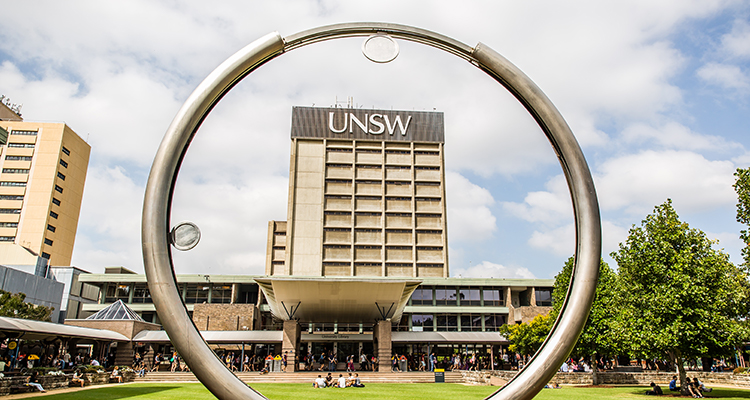Maximize Your Score with Proven GAMSAT Preparation Exam Strategies
Read now/f/102615/8000x2000/04d9bc47a6/brisbane-banner.png)
/f/102615/8000x2000/04d9bc47a6/brisbane-banner.png)
Jump To
UCAT scores: What do they mean?
What is a good UCAT score?
Medical schools requiring UCAT scores
How do UCAT universities use scores?
Meeting your UCAT cut-off scores
Written By Team MedView
Reviewed By Callum Chalmers (Currently studying Bachelor of Medicine, Bachelor of Surgery - MBChB at University of Auckland)
The University Clinical Aptitude Test (UCAT) is a crucial step in the process of applying to medical school.
The UCAT score you receive determines the universities you have a chance of scoring an interview for, with each institution having individual entry criteria.
We've created a handy guide that breaks down the requirements you need to meet in order to be considered for an interview offer at Australia's top medical schools — from the University of New South Wales to Monash University.
Plus, we offer a refresher on how the UCAT cut-off scores work and explore where to seek support on your medical school journey. Let's dive in!
UCAT scores are the primary assessment tool for undergraduate medicine entry in Australia. A high UCAT score not only increases your chances of receiving an interview offer but also plays a significant role in determining your eligibility for various medical schools.
For some applicants, such as those from rural and remote areas, the UCAT score required might be comparatively lower.
The scoring process for the 4 cognitive subtests (Verbal Reasoning, Decision Making, Quantitative Reasoning and Abstract Reasoning) of the UCAT ANZ is based on a scaled score due to the number of questions for each subtest varying.
It's not possible to make a direct comparison of the raw marks between these subtests and as a results, these marks are converted to scale scores that range from 300 to 900.
For the Verbal Reasoning (VR), Quantitative Reasoning (QR), and Abstract Reasoning (AR) subtests, each question carries a weightage of 1 mark, while in the Decision Making (DM) subtest, multi-statement questions are weighted as 2 marks.
The total scaled score, which can be considered as an average score, is achieved by summing the individual scaled scores of VR, DM, QR, and AR, which can range from 1200 to 3600.
This overall UCAT score allows universities to compare applicants’ performances across different testing years, ensuring a fair assessment of candidates’ aptitude and determining the cut off score for admissions.
The final part of the UCAT is the Situational Judgement Test (SJT), which assesses an applicant’s ability to understand real-world situations and make appropriate decisions based on the information provided. The SJT score ranges from 300 to 900 — this scoring system is the same as that of the other subtests.
Importantly, the SJT isn't considered by most universities in the admissions process but you still need to complete it when sitting the UCAT.
Stay ahead in UCAT prep! Get the latest updates, key dates, and insider tips—delivered monthly to your inbox. Sign up for ON THE PULSE with MedView, our monthly newsletter, and your UCAT digest!
A “good” UCAT score is typically around the 90th to 95th percentile, which is the score required for entry into medicine.
Based on previous cohorts, the average UCAT score invited to interview is over 3000 — those with scores of 3100+ are more likely to be offered an interview than those in the 2800 to 2900 range.
Your UCAT score is a percentile score, reflecting your performance relative to other exam takers, and a higher score enhances your prospects of scoring both an interview and an offer at a commended medical school.
To access official percentile data for UCAT and better understand where you stand among other applicants, you can visit the UCAT ANZ website.

A number of universities in Australia require UCAT scores for admission — these are:
The average score invited for interviews varies depending on the university and how competitive the pool of applicants is. Keep in mind that these cut-off scores tend to fluctuate each year so it will rarely be the same as the previous year.
Each medical school has different requirements and it's important to be aware of these when applying. Here's a look at how 12 Australian universities use both UCAT and ATAR scores in their admissions process.
ATAR requirements
UCAT cut-off score
ATAR requirements
UCAT cut-off score
ATAR requirements
UCAT cut-off score
ATAR requirements
UCAT cut-off score
ATAR requirements
UCAT cut-off score
ATAR requirements
UCAT cut-off score
ATAR requirements
UCAT cut-off score
ATAR requirements
UCAT cut-off score
ATAR requirements
UCAT cut-off score
ATAR requirements
UCAT cut-off scores
ATAR requirements
UCAT cut-off score
ATAR requirements
UCAT cut-off score
Achieving a competitive score and working to meet minimum academic requirements requires a robust study strategy that focuses on both your UCAT and ATAR outcomes.
While you're guided through the ATAR process at school, the UCAT journey can seem a little less straightforward.
This is where MedView comes in — we understand the process of applying to medical schools is not only complex and confusing but it’s more competitive than ever before!
MedView Education takes med school admission to a new level through personalised admission support, application review, entrance exam and interview tutoring, and extracurricular mentoring for students in Australasia.
Our dedicated team and personalised support helps students get the results they need, with our UCAT students 5 times more likely to receive an interview and 4.5 times more likely to gain admission to an Australian medical school.
Plus, you can access a bunch of free and helpful resources — including insights from current medical students and MedView Admission Experts on the pathways and requirements to successful admission into medical school — via the MedView website.
Exploring alternative options for medical school admissions, like non-UCAT medical schools and postgraduate medicine pathways, is also a viable option. We'll dive into this a little more below!

Not achieving the necessary UCAT score to land a university interview offer is incredibly disappointing. When you put in a lot of time and effort and don't see the results, it can feel understandably disheartening and you might not know what to do next.
The good news is that there are other options for medical school admission that don't require the UCAT.
In fact, institutions like James Cook University, the University of Sydney (USYD) and the University of Melbourne don't use the UCAT in the admissions process [3].
USYD doesn't require applicants to complete the UCAT in order to apply for its medical program.
Instead, the university offers a Guaranteed Entry program, which gives you a confirmed place in an eligible degree with available places, granted you achieve the required selection rank and meet additional admission criteria.
Applicants need an ATAR of 99.95 in order to proceed to the assessment day, which includes a written task and group interview. Keep in mind that this is an incredibly competitive program with only 30 domestic places available!
Similar to USYD, the University of Melbourne also offers a Guaranteed Entry pathway for students.
To qualify for a full fee paying place in the Doctor of Medicine, you'll need a 99 ATAR, while those looking for a Commonwealth-supported place through the Chancellor's Scholarship program need to achieve a 99.9 ATAR.
It's important to note that applicants also need to sit and pass an MMI interview in the final year of their Bachelor's degree and full fee paying applicants must have a weighted average mark (WAM) above 75 from their Bachelor's degree.
James Cook University also doesn't require the UCAT and tends to offer places to a fairly large ATAR score range.
The ATAR range of secondary students offered a place in the Bachelor of Medicine, Bachelor of Surgery at James Cook University for Semester 1, 2023 spanned from 91.85 to the highest of 99.95 [4].
This demonstrates how important the application and interview process is at a school like James Cook University and means you don't have to rely on your UCAT score if it came in lower than you would have liked.
However, bear in mind that the competition for spots at non-UCAT medical schools might still be intense, and fulfilling all other admission criteria is necessary to increase your success chances.
A low UCAT score in 2023 is considered to be anything below 3000. If you happen to receive a low UCAT score, your best option is to explore non-UCAT universities or look at schools that don't rely as heavily on UCAT scores.
For example, while Flinders University requires applicants to sit the UCAT, it's weighing of results for admissions is 90% ATAR and 10% UCAT.
Your UCAT score is an indication of how your performance compared to other students taking the same exam, with a higher score indicating you did better than most. Therefore, your UCAT score can be interpreted as a measure of your academic success.
Sign up to our newsletter to stay On The Pulse with the latest UCAT and Med School updates!